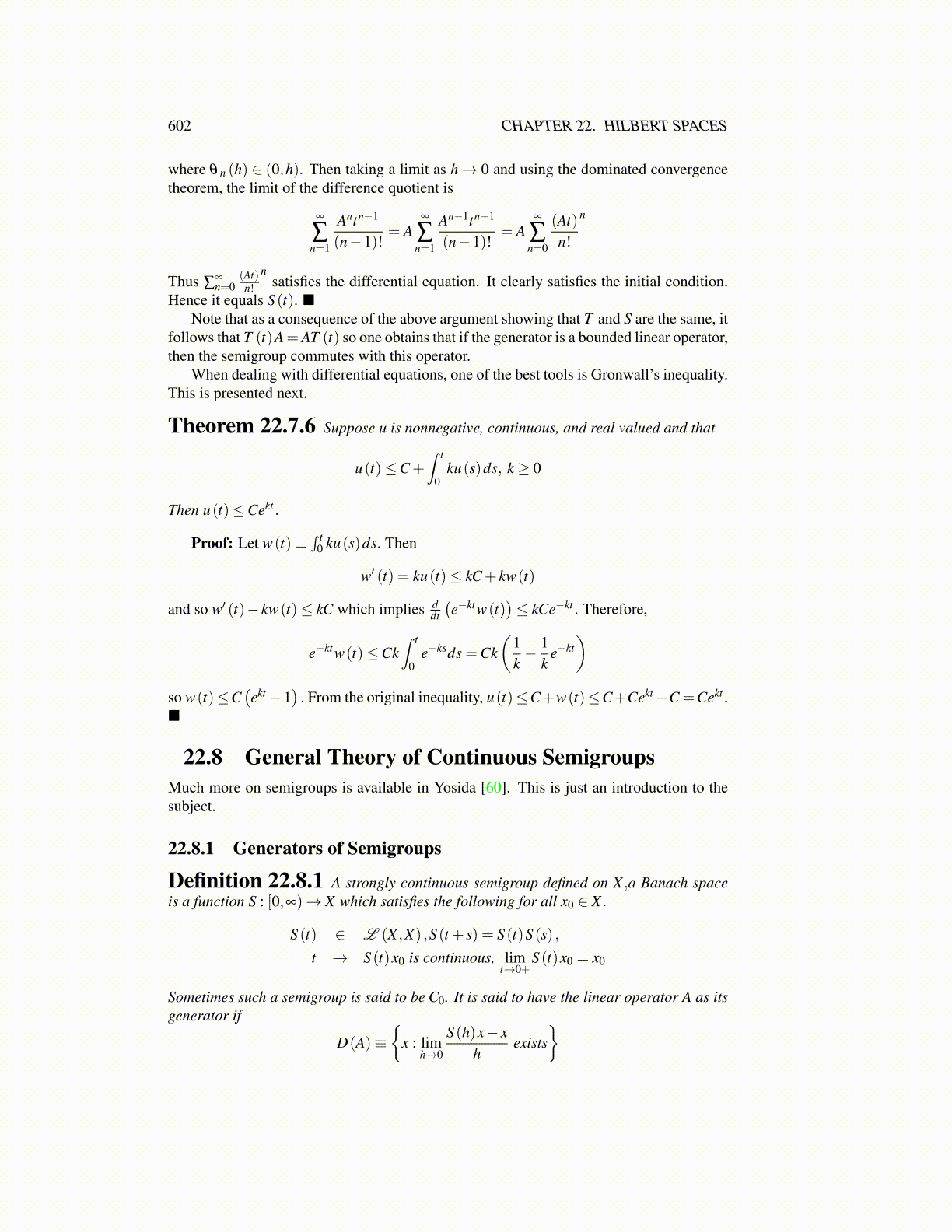
602 CHAPTER 22. HILBERT SPACES
where θ n (h) ∈ (0,h). Then taking a limit as h→ 0 and using the dominated convergencetheorem, the limit of the difference quotient is
∞
∑n=1
Antn−1
(n−1)!= A
∞
∑n=1
An−1tn−1
(n−1)!= A
∞
∑n=0
(At)n!
n
Thus ∑∞n=0
(At)n!
nsatisfies the differential equation. It clearly satisfies the initial condition.
Hence it equals S (t). ■Note that as a consequence of the above argument showing that T and S are the same, it
follows that T (t)A=AT (t) so one obtains that if the generator is a bounded linear operator,then the semigroup commutes with this operator.
When dealing with differential equations, one of the best tools is Gronwall’s inequality.This is presented next.
Theorem 22.7.6 Suppose u is nonnegative, continuous, and real valued and that
u(t)≤C+∫ t
0ku(s)ds, k ≥ 0
Then u(t)≤Cekt .
Proof: Let w(t)≡∫ t
0 ku(s)ds. Then
w′ (t) = ku(t)≤ kC+ kw(t)
and so w′ (t)− kw(t)≤ kC which implies ddt
(e−ktw(t)
)≤ kCe−kt . Therefore,
e−ktw(t)≤Ck∫ t
0e−ksds =Ck
(1k− 1
ke−kt
)so w(t)≤C
(ekt −1
). From the original inequality, u(t)≤C+w(t)≤C+Cekt−C =Cekt .
■
22.8 General Theory of Continuous SemigroupsMuch more on semigroups is available in Yosida [60]. This is just an introduction to thesubject.
22.8.1 Generators of Semigroups
Definition 22.8.1 A strongly continuous semigroup defined on X ,a Banach spaceis a function S : [0,∞)→ X which satisfies the following for all x0 ∈ X .
S (t) ∈ L (X ,X) ,S (t + s) = S (t)S (s) ,
t → S (t)x0 is continuous, limt→0+
S (t)x0 = x0
Sometimes such a semigroup is said to be C0. It is said to have the linear operator A as itsgenerator if
D(A)≡{
x : limh→0
S (h)x− xh
exists}